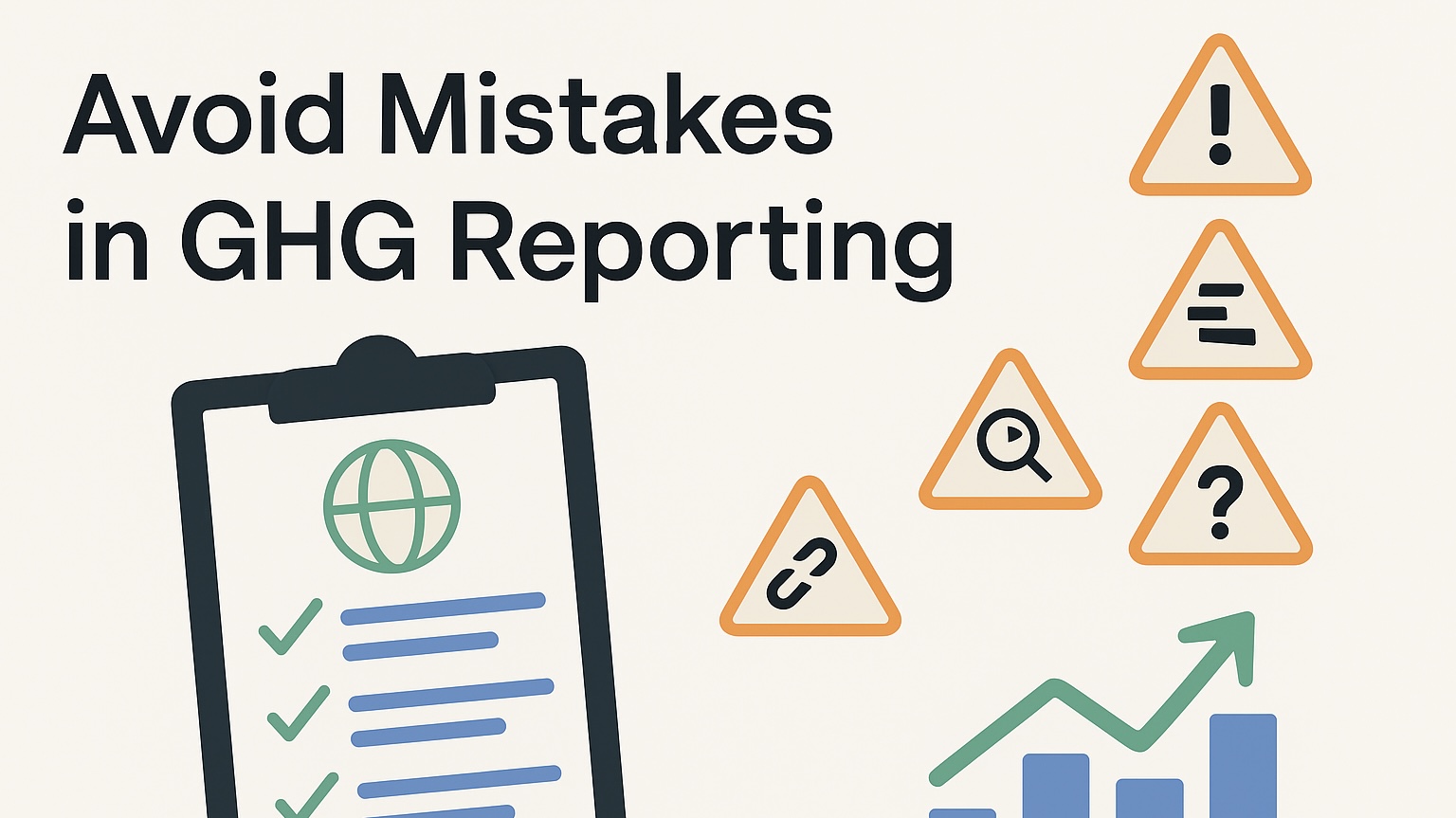
Understanding your company’s greenhouse gas (GHG) emissions is a key part of sustainable operations—but many businesses still get it wrong. Mistakes in GHG reporting don’t just skew internal metrics; they can lead to regulatory risks, poor investment decisions, and damaged reputation. Here’s how to avoid the most common errors.
1. Mistake: Overlooking Scope 3 Emissions
Many companies only report Scope 1 (direct) and Scope 2 (indirect from energy) emissions, ignoring the often largest category: Scope 3 emissions from the supply chain. These include upstream materials, transportation, and even product use.
Fix: Start with a supply chain emissions map to identify hotspots. Focus on major contributors first—like purchased goods, business travel, or freight.
2. Mistake: Using Outdated or Generic Emission Factors
Default emission factors can be overly simplified or outdated. For example, “1 kWh = X kg CO₂” doesn’t account for regional electricity mixes or fuel-specific emissions.
Fix: Use updated and activity-specific factors from recognized databases. Tailor emission calculations to local contexts for better accuracy.
3. Mistake: Manual Reporting and Spreadsheet Errors
Spreadsheets are prone to version control issues, hidden formula errors, and inconsistent formats, leading to reporting mistakes and inefficiencies.
Fix: Use a centralized carbon accounting platform that automates calculations, tracks changes, and stores verifiable audit trails.
4. Mistake: Not Documenting Assumptions
If your reports lack transparency about data sources, calculation logic, or boundary definitions, they lose credibility—especially in audits or ESG ratings.
Fix: Keep a log of all data assumptions, estimation methods, and organizational boundaries used. Include this in your final GHG report.
5. Mistake: Mixing Different Types of Data Without Clarity
Not all emissions data is the same—some are directly measured, others are estimated or based on industry averages. When these are combined without clear labeling, your final numbers can become misleading.
Fix: Be transparent about the origin of each data point. Clearly distinguish between measured, estimated, and assumed values in your reports. This helps stakeholders understand the confidence level of your results and supports more informed decision-making.
By addressing these issues early, businesses can ensure more accurate, transparent, and actionable GHG reports—supporting both compliance and sustainability goals.